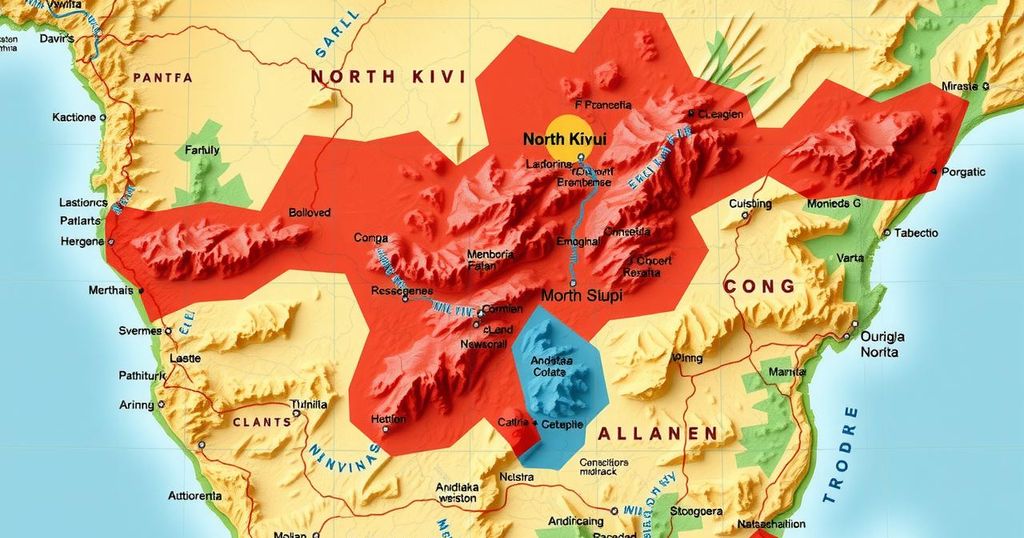Congo-Kinshasa: The Impact of Burundi Troops and Hutu Rebels on M23’s Actions in Goma

The article reviews the complex military dynamics in eastern DRC where M23 rebels confronted Burundian troops and FDLR militias. Initially gaining ground, the coalition faced a decisive counteroffensive from M23, reclaiming key territories like Minova and Goma. The shifts in this conflict illustrate ongoing tensions and the possibility of future hostilities.
The article discusses the recent offensive in eastern Democratic Republic of Congo (DRC) involving M23 rebels, Burundian troops, and the FDLR militia. The FDLR, a UN and US-designated terrorist group, is linked to the 1994 Rwandan Genocide against the Tutsi. On January 12, 2025, Congolese army spokesman Lt Col Guillaume Ndjike Kaiko reported an attack on M23 positions, resulting in the reclamation of several localities in South and North Kivu regions, although Burundian and FDLR forces primarily led the offensive.
The offensive occurred while M23 was observing a unilateral ceasefire aimed at initiating peace talks with President Felix Tshisekedi’s government. An M23 commander noted that they retreated strategically to regain tactical advantage. Although Burundian and FDLR forces occupied some areas, they quickly lost them to a counteroffensive by M23, which expanded their territory into southern Kivu after a decisive reclaiming of lost villages.
By January 17, M23 had regained lost villages, pushing their adversaries further south, while asserting control over critical strategic points including Minova, a town essential for supplying goods to Goma. The Burundian troops aimed to recapture Rubaya, a locality seized by M23, but their offensive inadvertently facilitated M23’s rapid recovery and territorial gains.
M23’s counteroffensive was organized into a phased approach. Phase I involved repelling the Burundian-led coalition and capturing additional territories across South Kivu. On January 20, M23 captured several key locations including Minova. Phase II saw the M23 forces advance into strategic areas, with artillery capabilities aiding their tactical maneuvers.
On January 23, M23 successfully seized Mubambiro barracks, with different battalions executing coordinated attacks to minimize confrontation. A surprising later attack by South African troops under SAMIDRC marked the coalition’s involvement but ultimately ended in defeat for them, as heavy casualties were inflicted on the coalition forces, including the loss of military hardware.
The third phase began with M23 advancing towards Goma, marking the decline of coalition forces after the death of North Kivu provincial governor Gen Peter Chirimwami. M23 engaged in battles along the Goma-Sake axis, progressively capturing localities on their way to Goma, which eventually fell to the rebels on January 28, successfully concluding the offensive and marking a significant shift in power dynamics in the region.
Burundian forces, assisted by FDLR militias, triggered significant military exchanges against M23 rebels in eastern DRC. Despite initial successes, the offensive led to a strong counterattack from M23, culminating in the recapture of key areas, including Minova and later Goma, following phased military strategies that exploited tactical advantages and coalition weaknesses. The outcome highlights the shifting control in the region and the potential for ongoing conflict as various factions vie for dominance.
Original Source: allafrica.com







